The Casentino area of Tuscany, stretching to the east of Florence, is often overlooked in favor of the more famous Chianti zone nearby. It’s a secluded place, perfect for those who have already visited the well-known Tuscan towns and seek something different. Here the visitor can discover one of Europe’s purest forested areas, take in the spirituality of ancient monasteries, enjoy un-touristed villages that preserve their medieval characteristics, and hike in woodlands of white spruce and black pines. As an immigrant here in Florence without a car, I don’t get into these lovely countryside places as much as I’d like but I had the good fortune to go to the Casentino three times in the past year, each time visiting a different other-worldly monastery or hidden village.
Towns
Poppi, the historic capital of Casentino, is a button-sized village that can be circled on foot in a few minutes. Famous for the Guidi Castle, it was purportedly designed by Lapo Tedesco, the father of Arnolfo del Cambio who later built Palazzo Vecchio in Florence, using the Guidi Castle as a prototype. Do you see the similarities?

The castle of the Guidi Counts is one of best preserved castles in Italy and houses an important library with manuscripts as old as the castle itself. Right in front of the castle is where the battle of Campaldino occurred in 1289. Fought between the Florentine Guelphs and the Arezzo Ghibellines, our famous Poet Dante took part in this battle and later, the Guidi Counts hosted Dante when he had to leave Florence in exile. Understandably there’s a bust of Dante in front of it.
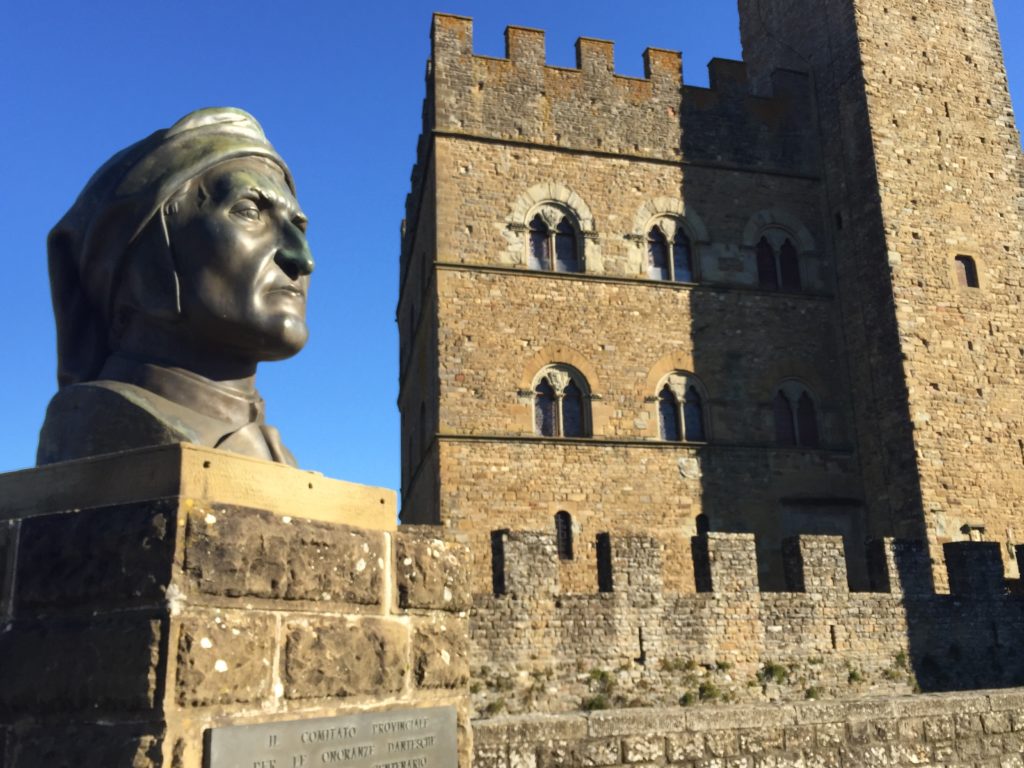
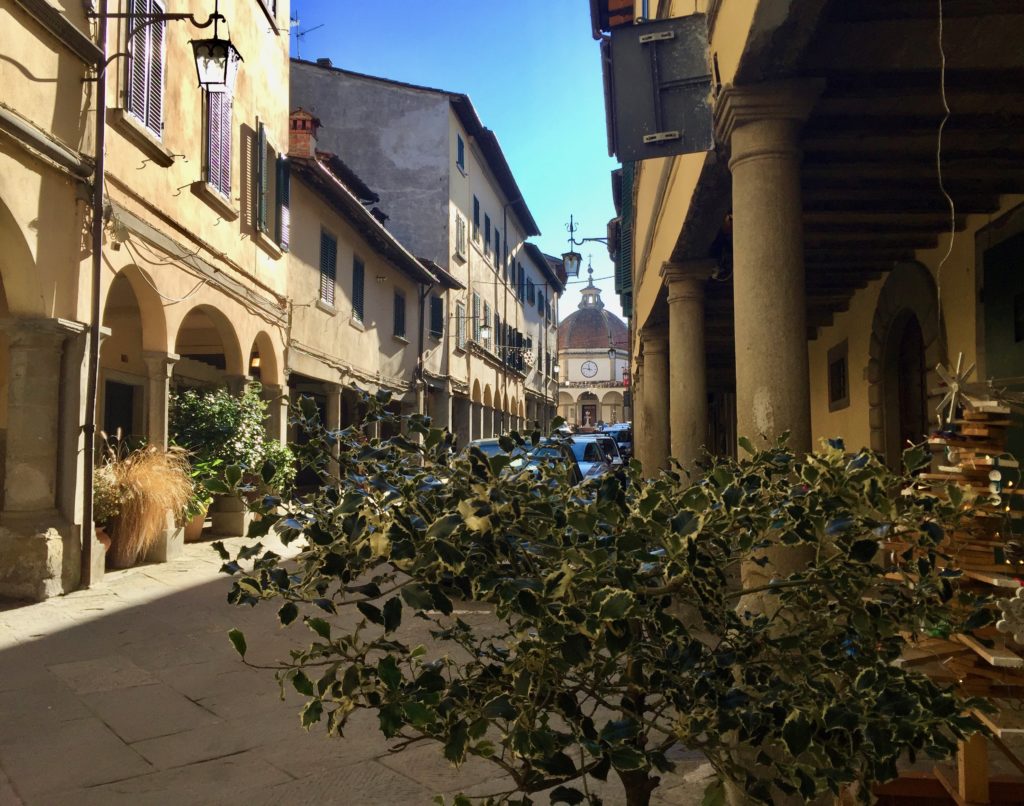
The village of Stia, tucked into the mountains above Poppi, was controlled in the Middle Ages by the Guidi Counts and like Poppi, its main piazza is surrounded by porticos. It was in the 1800s that Stia reached its height, due to the creation of a wool mill.
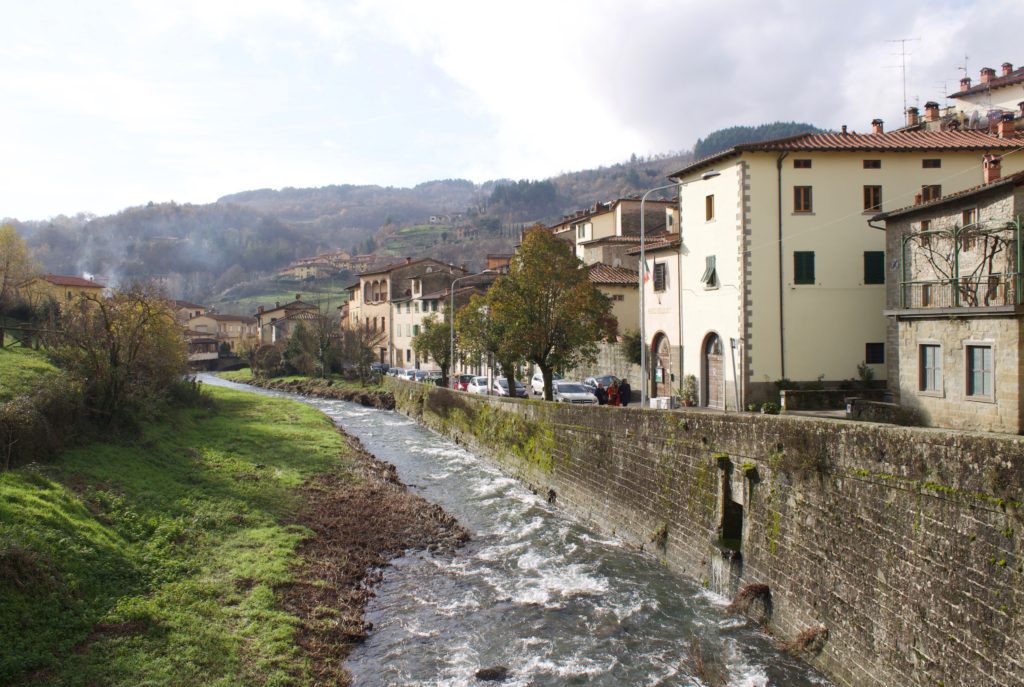
The art of wool making in the Castentino goes back to the ancient Romans and documents tell us that by the early 1300s the Florentines were buying Castentino cloth. However, the wool guild in Florence (L’Arte della Lana) imposed rules on the wool production in Stia. Only the Florentines could import the higher quality cloth from northern Europe while the wool workers of Stia had to remain with their rougher cloth, in order not to compete with the high quality cloth produced by Florence.
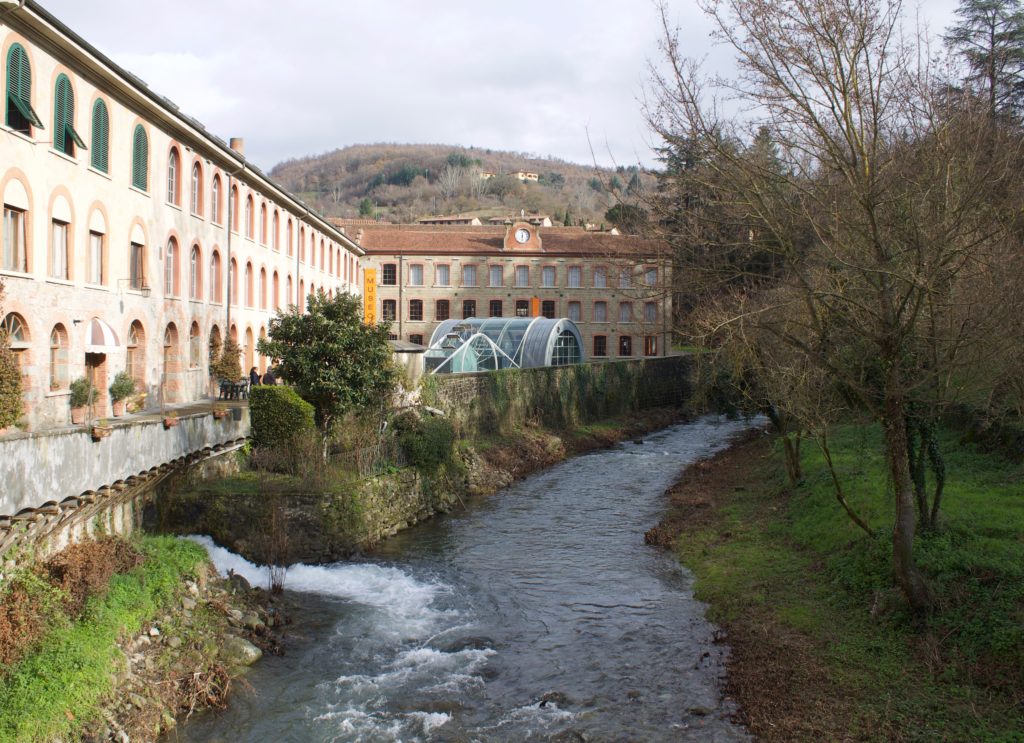
The humble cloth of Stia has a specific characteristic, obtained by “napping” (rubbing the wool with a stone). The cloth was resistant to the elements and was worn by the shepherds and monks in the area. However, in the 1800s high society Florentines went crazy for Casentino cloth and the Stia wool mill became one of the most important centers for wool production in Italy. By the post-WWII era, even Hollywood was charmed by this fabric. The image of Audrey Hepburn in her orange Casentino wool coat in Breakfast at Tiffany’s is iconic.
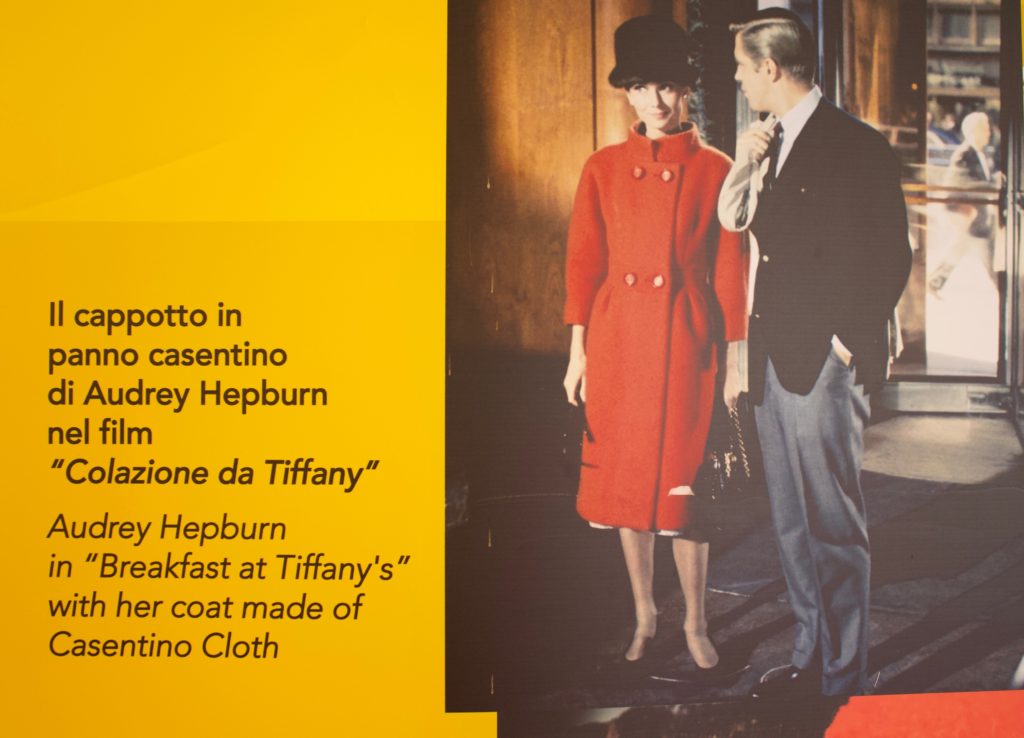
The mill closed in the 1990s and re-opened as a museum in 2010. It highlights the importance of the textile industry for the area and covers the history of silk, cotton and wool production.
Included in the museum’s impressive collection of looms, is a display informing us that Leonardo da Vinci invented a more efficient spinning wheel and loom. He wrote that his loom was, “as important an invention as the printing press and no less useful.”
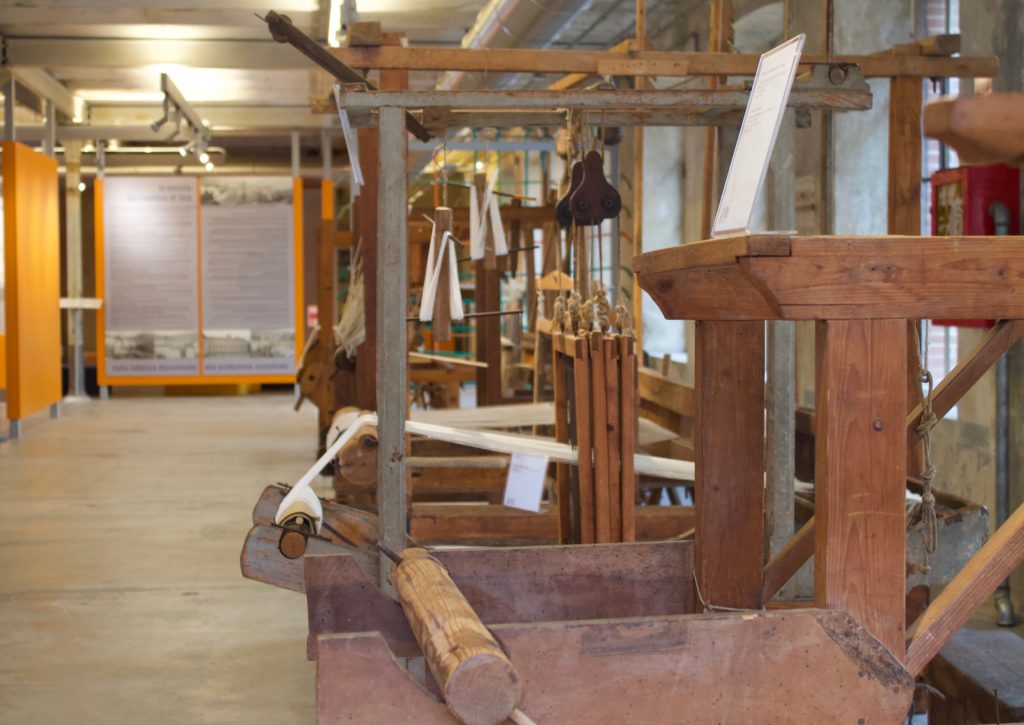
The museum is open Tuesday through Sunday and costs 5 Euro.
Near Stia, and not to be missed is the countryside Church of San Pietro in Romena, a gem of Romanesque architecture. The apse from the outside is splendid on the green hill and the inside has wonderful sandstone columns with animal and floral motifs on the capitals.
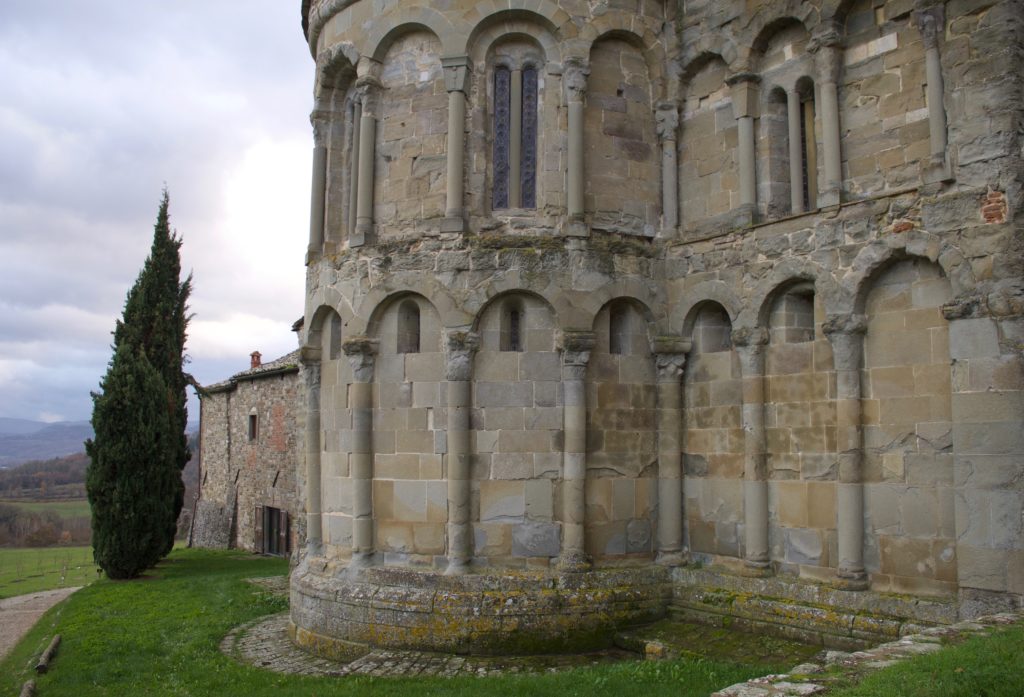
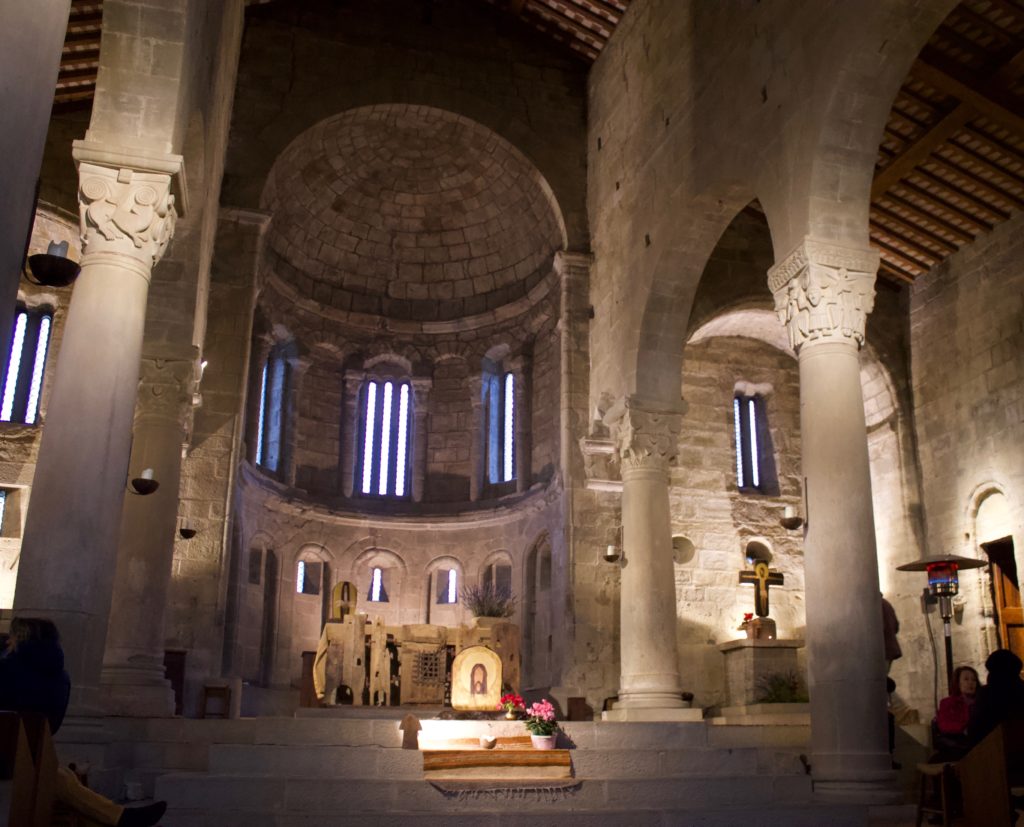
Monasteries
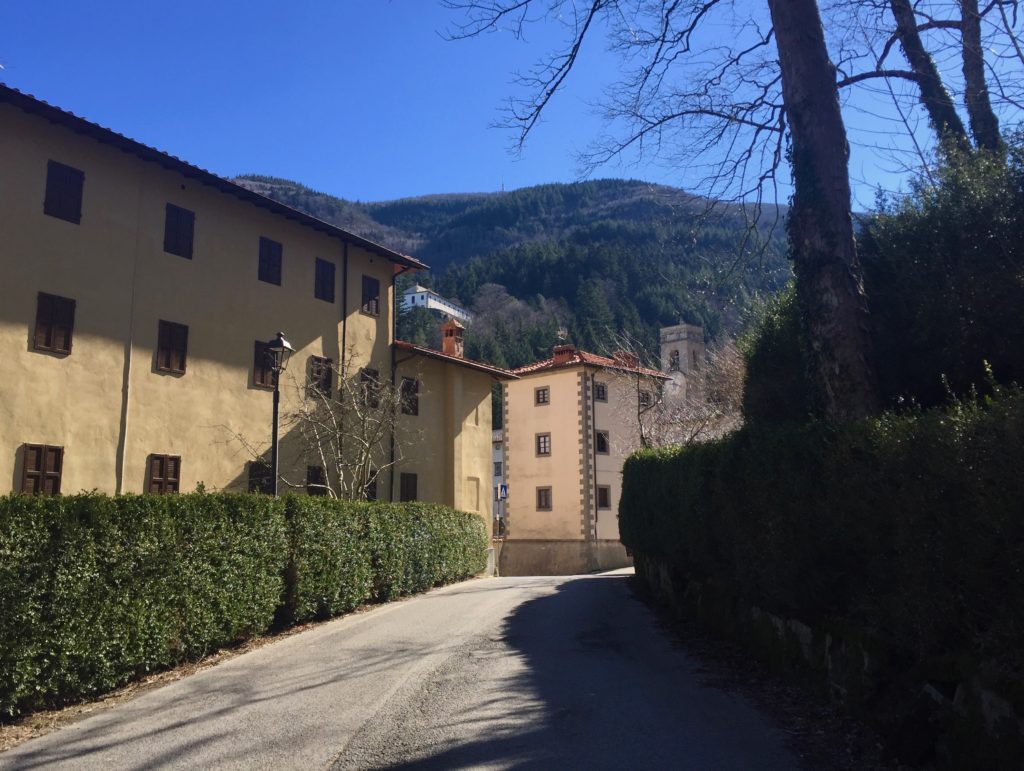
The area’s remote mountains and quiet harmony with nature was a perfect place for spiritual retreats to develop. Here the Abbey of Vallombrosa was founded in 1038 by Giovanni Gualberto. Gualberto was a Florentine noble whose brother Ugo was murdered, and Gualberto wanted revenge. But when he came upon the murderer in a street on Good Friday, he granted the killer’s plea for mercy. Gualberto then went into the Church of San Miniato al Monte to pray and the figure on the crucifix is said to have bowed its head to him in recognition of his merciful act. Gualberto ultimately went into the Castentino forest and founded the Abbey of Vallombrosa, and the order of the Vallombrosans.
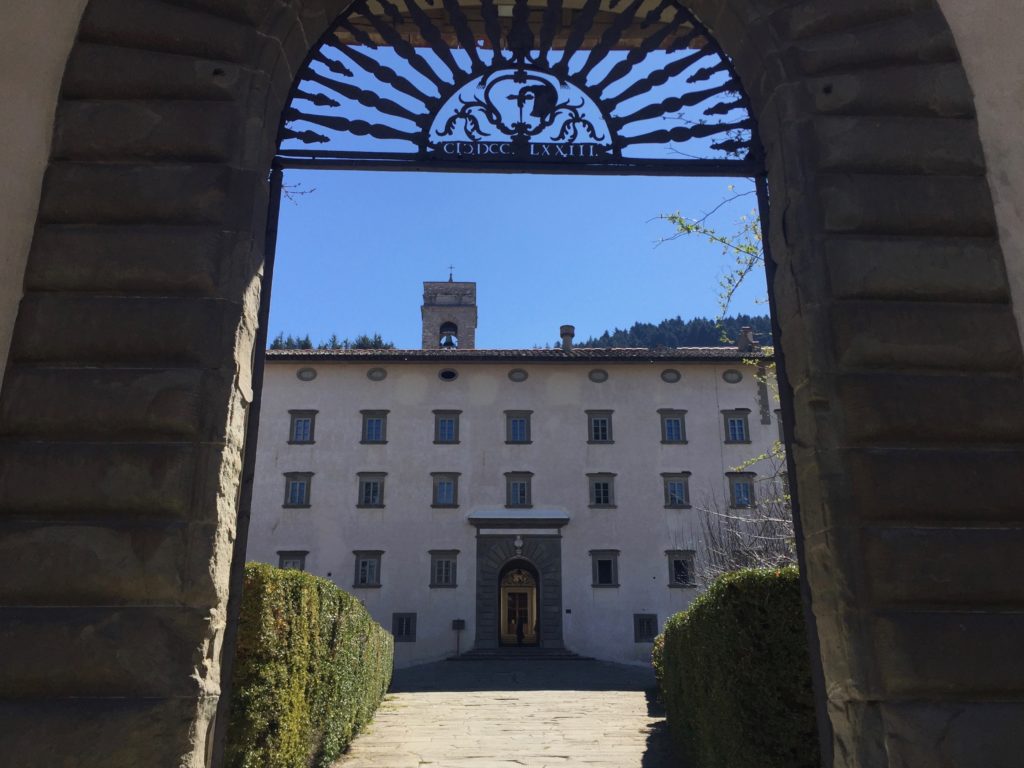
Instead of a traditional garden at Vallombrosa, he had the monks plant trees. Gualberto became the patron saint of the Italian Forestry Corps and today there’s an arboretum at Vallombrosa containing more than 5,000 specimens belonging to more than 1200 species of trees and shrubs.
The British poet, John Milton, inspired by the beauty of Vallombrosa, wrote a passage about it in his poem, Paradise Lost. One of the important works of art in the monastery is a painting by Domenico Ghirlandaio, which includes the image of Giovanni Gualberto.
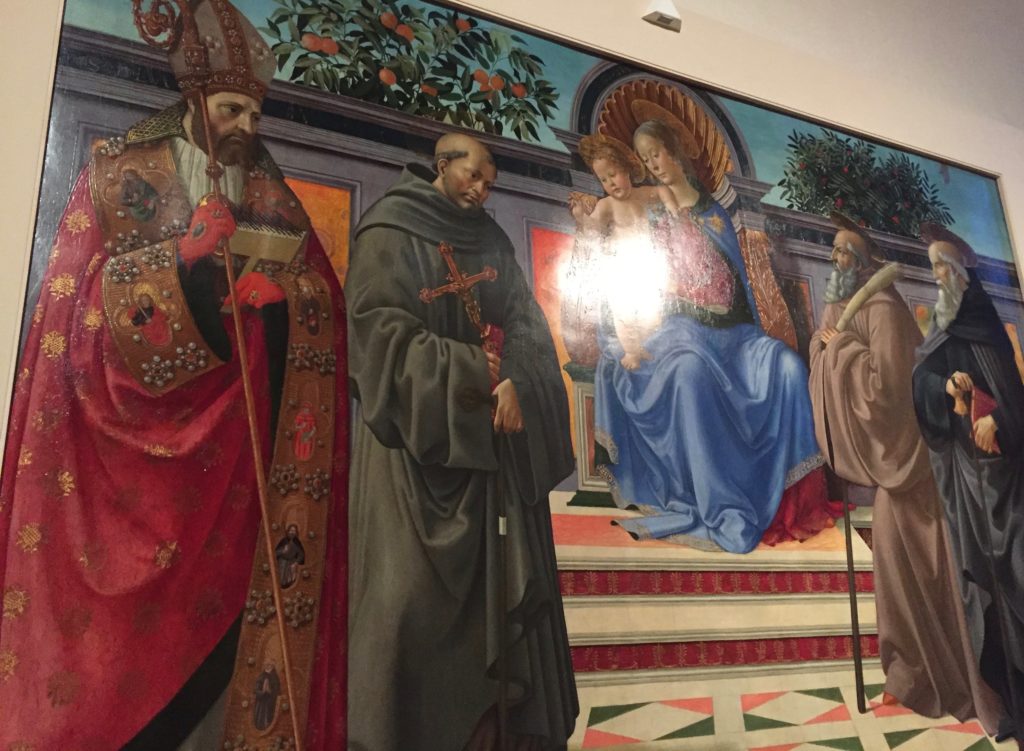
The Hermitage of Camaldoli is another monastery in the Casentino dating back to the 11th century. It was founded in 1012 by San Romualdo, a Benedictine monk who found the forests of Casentino to be a perfect place to devote himself to a contemplative life.
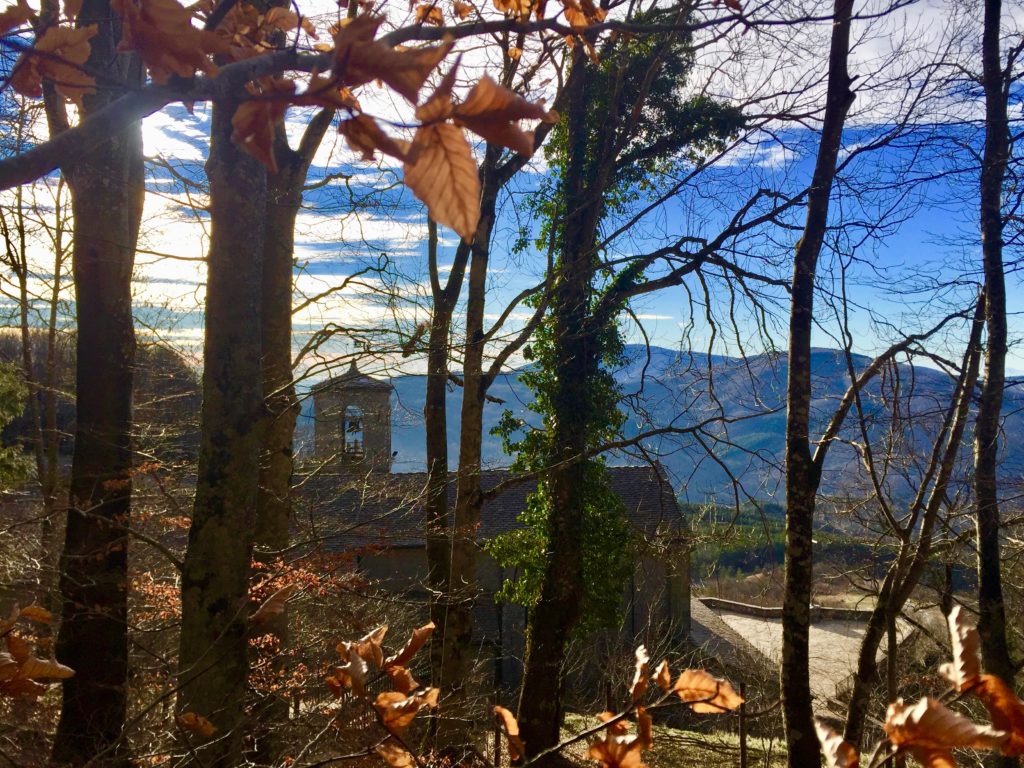
La Verna, a significant Franciscan monastery in the area was given to Saint Francis in 1213 by a count as a favorable place for prayer. This is where Saint Francis received the stigmata. I was lucky to spend a Christmas here and I found it hauntingly spiritual.
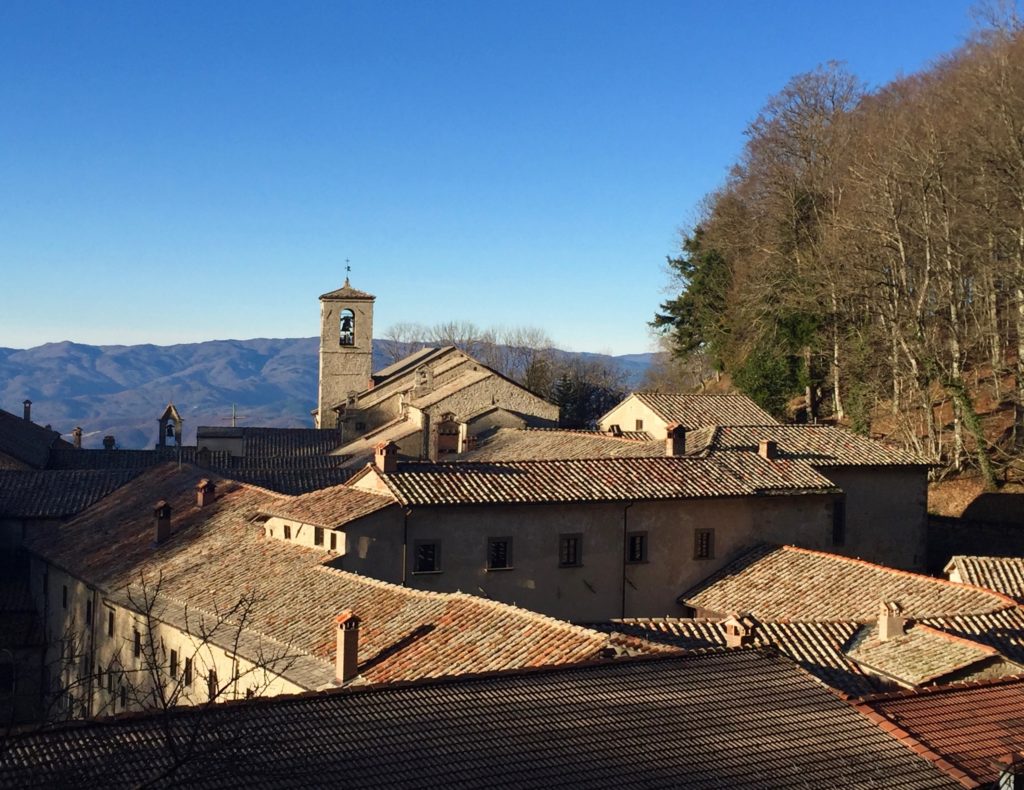
Built on top of a rocky crag and surrounded by woods, I could easily imagine Saint Francis encountering wolves, rabbits and deer here, and communicating with them. It was a truly special and otherworldly place to spend Christmas. See more about that here.
Hiking
On the Apennine side of the valley is the Casentino Forest National Park, one of the largest and best preserved parks in Italy with 800 kilometres of hiking paths. La Verna is located in this park and is the official starting place for the Way of Saint Francis pilgrimage route that goes to Rome. So there are plenty of trails around La Verna.
The Park organizes a program of guided treks as well as descriptions for trekking on your own. One example is a hike that departs from San Benedetto in Alpe in the northern part of the park at the Tuscan/Emilia Romagna border. This goes to the Acquacheta, a waterfall of more than 70 metres that was described by Dante in the sixteenth canto of the Inferno. How cool is that to hike a place described in Dante’s Inferno? Go here or here for info.
The Park’s Information offices are:
Campigna – Via Centro +39 0543980231
Camaldoli – Loc. Camaldoli +39 0575556130
Stia – Piazza Tanucci
If you have benefitted from my content please feel free to use the donate button at the top of the right column. Your support helps me bring you great content more often.
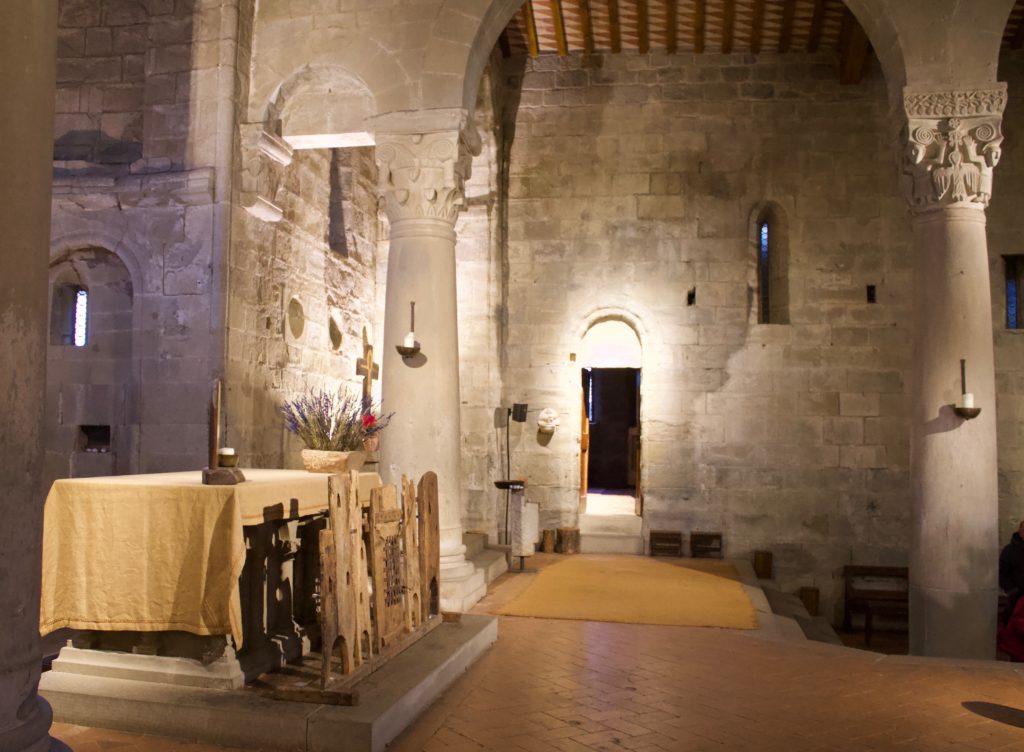

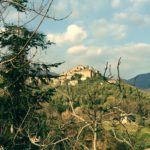
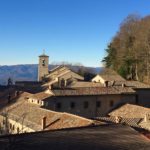
Love this! Great article! I love how you focus on places off the beaten path. Thanks for this info.
Great to get your feedback! Thanks!
I liked this article a lot- agree that the “off the beaten path” places are fascinating to read about and helpful to know about. This is the kind of area that would be appealing if I were traveling in Italy! Thanks for all the info and GREAT pictures!
You’re welcome! Thanks for your nice comment
Wonderful article Chandi! I’ve hiked in that area and it was wonderful! I’d like to go back now and see the castle and monasteries – just beautiful! And, it always helps to go armed with this kind of information!
Grazie mille!
Thanks for stopping by Lorrie, and great to hear that you’ve enjoyed a hike there!
Hello Chandi,
Beautiful pictures.
Do you do tours around this region?
David
Hi David,
I have arranged day trips for clients to La Verna. I can set it up, (transportation, lunch there, etc) and not go myself, or I can also go. Stopping at Poppi and the Romena church on the way back is possible.